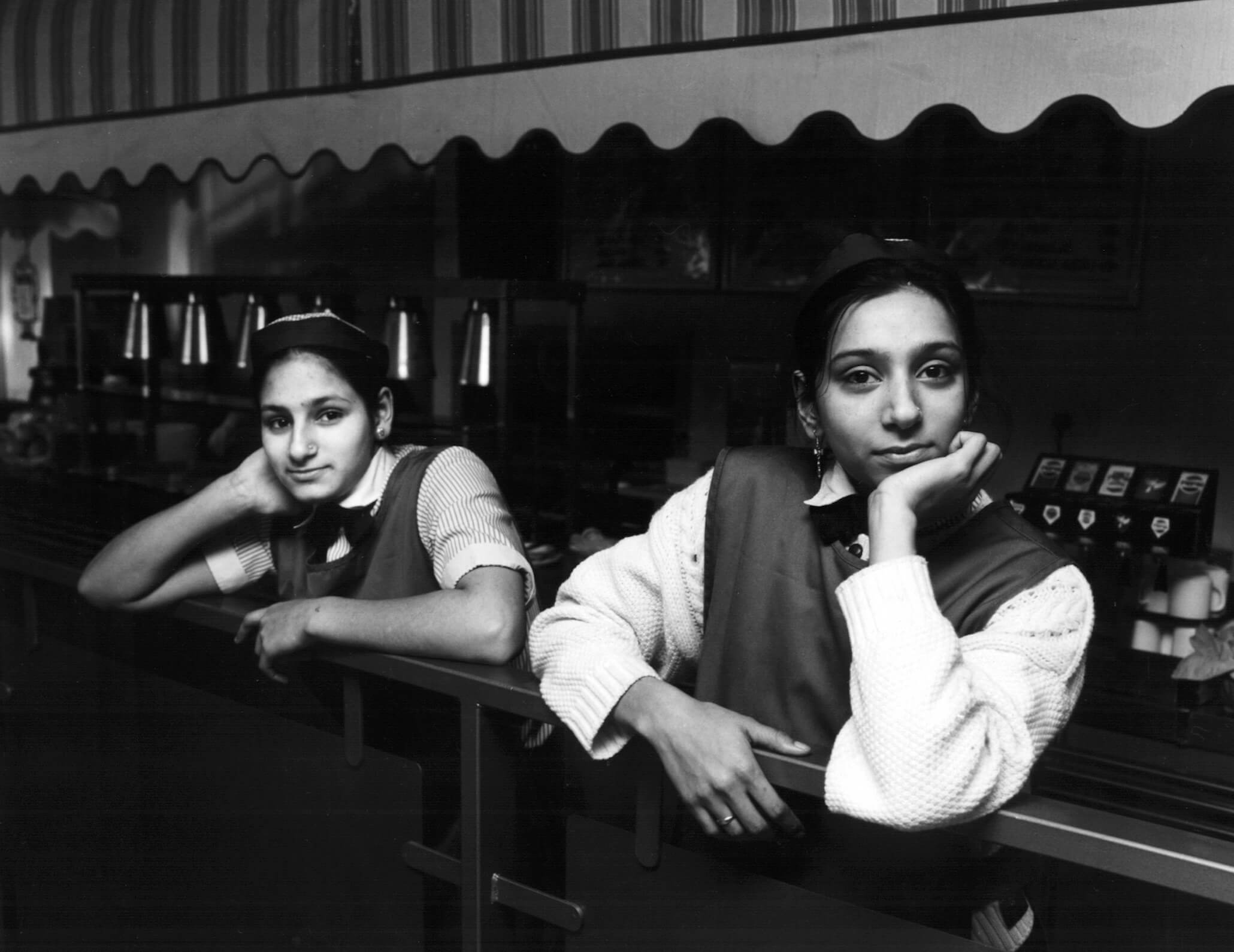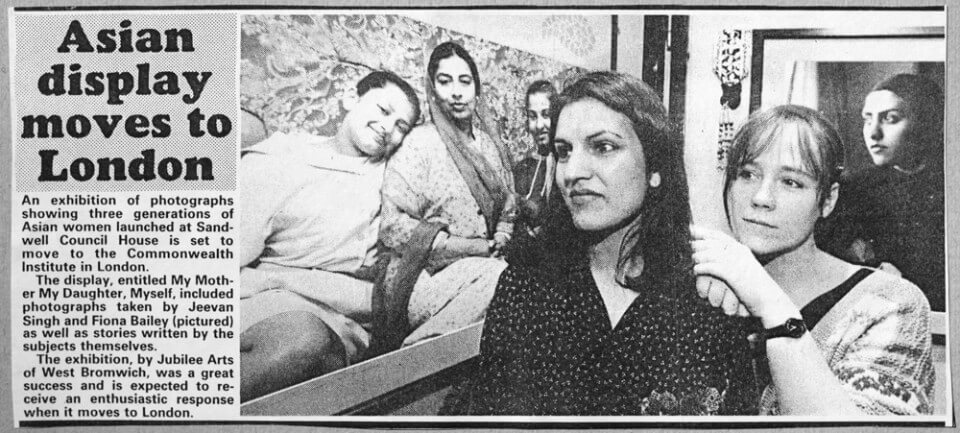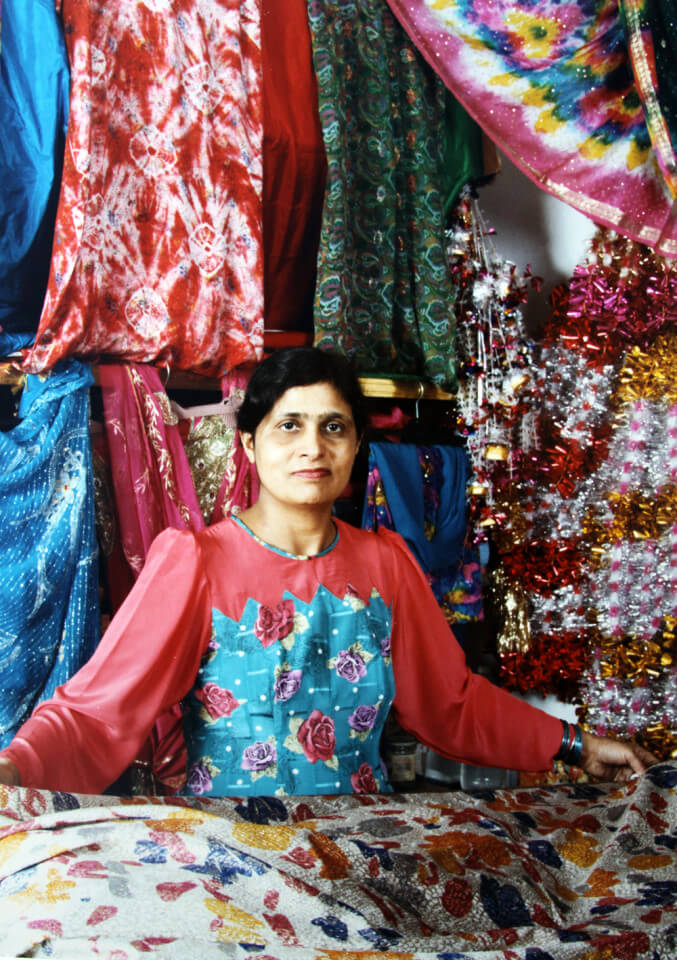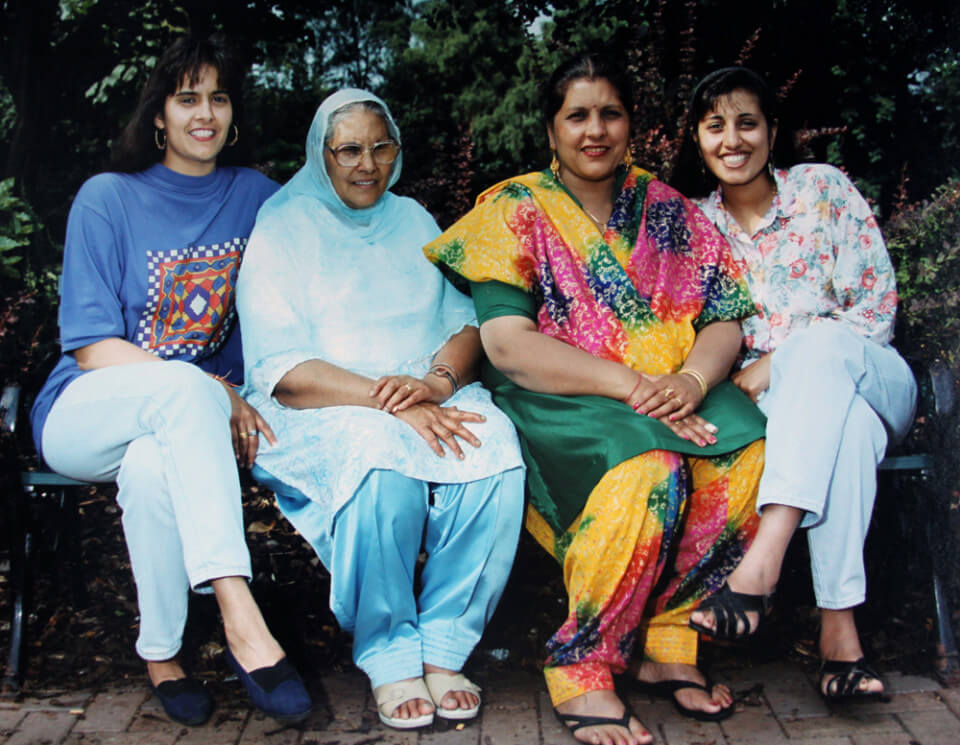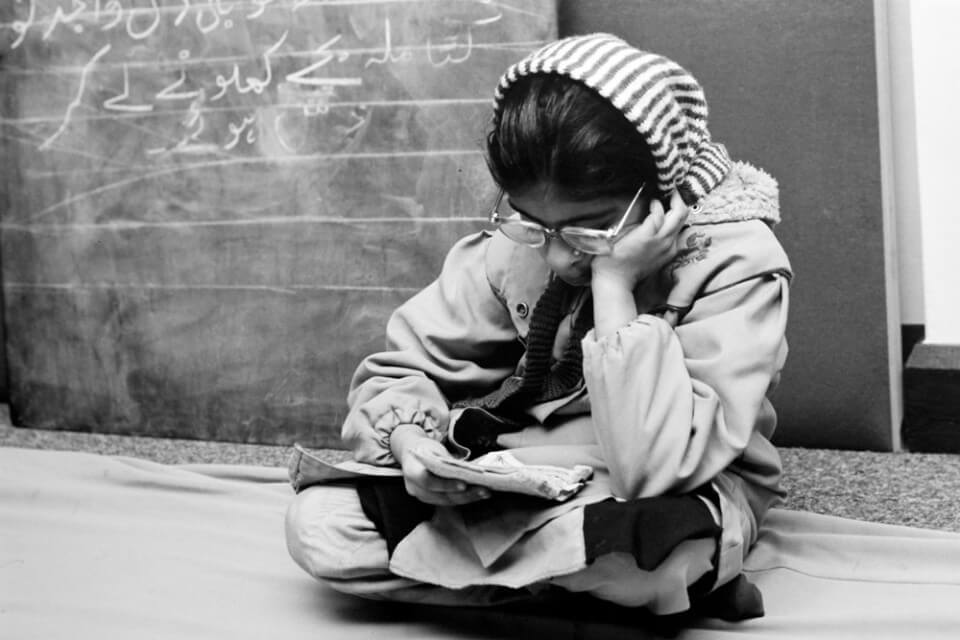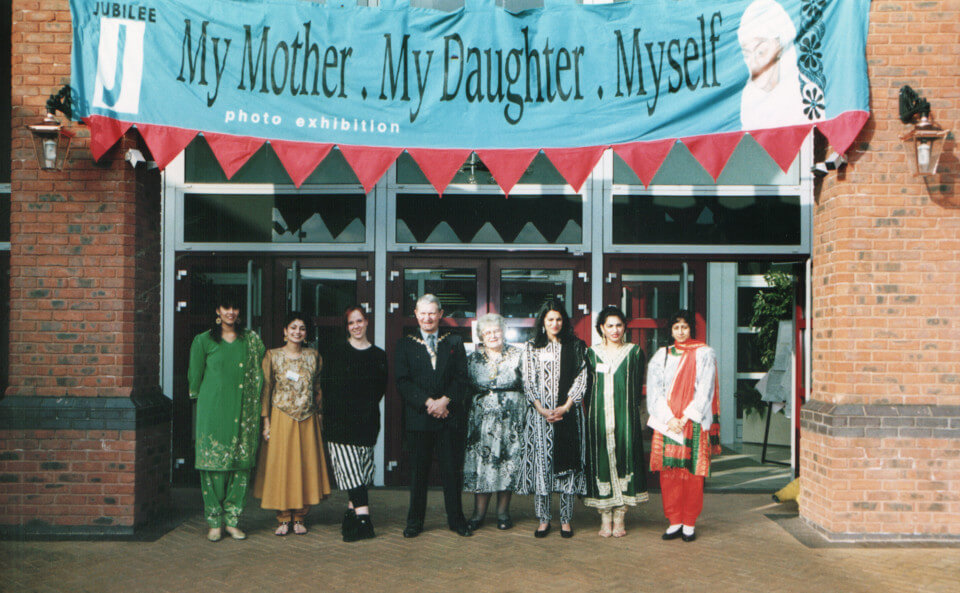‘My Mother, My Daughter, Myself’ was produced by Jubilee Arts as part of a programme of photographic projects called ‘The People’s Portrait of Sandwell’. The photographs were both in colour and black and white, portraits of three generations of Asian women in Smethwick, taken by local photographers Fiona Bailey and Jeevan Singh. The exhibition had accompanying text in Punjabi, Urdi and English, from oral history interviews with participants. This image portrays two young Asian women who worked at an all night cafe in Sandwell.
The ‘People’s Portrait’ work was an antidote to negative stereotyping, working with local communities to create a new portrait of contemporary life from the grass roots up. This particular exhibition arose from a concentrated period of action research in the area by arts workers in 1991, culminating with the opening of Smethwick People’s Shop, a temporary space for six weeks of activities, displays and collected commentaries. It was here that a group of young South Asian women met, shopkeepers, lawyers, business women, workers at NGO’s, who expressed their frustration with the commonly held assumption that they were simply wives and mothers, and wanted to explore the changing roles of women across three generations.
Gurminder Sehint recalls: “It was this project that initially got me involved with Jubilee Arts. Sandwell has one of the largest Asian communities and there were not many visual images of this community and even less of Asian women. So we came up with a concept of depicting Asian women as mothers, daughters or simply as themselves. At that time, this allowed me to show my career as a Fashion Designer and also other Asian women who held key roles in the area, highlighting themselves and their daughters and mothers. The exhibition had its opening at the Council House in Oldbury and received praise for its forward thinking. The project instilled in me an interest in Women’s Development and led me to manage Sandwell Women’s Enterprise Development Agency (SWEDA) over a 14 year period.” Later in the 1990s, Gurminder joined the Board of Management of Jubilee Arts and went onto manage a number of regeneration projects in Birmingham.
In 1982 in Smethwick, 300 South Asian women machinists – many of them Sikhs – went on strike in protest over very low wages and the sacking of two men at the Supreme Quilting and Raindi Textiles clothing factory, men who were lobbying for trade union recognition and representation. They maintained a 24-hour picket at the factory over 10 weeks, determined mothers, grandmothers and children, gaining widespread coverage of their dispute. The men were not reinstated, but union recognition was eventually won. South Asian women were slowly challenging the stereotype of being demure and meek, polite and hidden from view. This was also the year that 16-year old Sheila Chandra appeared on Top of the Pops wearing a sari, performing with her band Monsoon their top twenty hit ‘Ever So Lonely’, with signature sitar and tabla. People from the Indian sub-continent were otherwise not to be seen on British media at this time – except in slightly exoticised roles, such as in the popular 1984 ITV series ‘The Jewel in the Crown’ about the last days of the British Raj. It would be quite some time before South Asian culture in Britain would be portrayed in its own right.
Of the exhibition at the time, Sharanjeet Shah said: ‘Much more than emotions, what I see in these photographs – and the excellent text that accompanies them – is a reflection of where Asian women are at now. All three generations represent their own interpretations of freedom, happiness, success, contentment and ambition. These ever changing definitions meet the needs of our ever changing role, both as everyday people in our daily lives and as career women.’ She called on young women to engage in political activities, to be agents of change. ‘Without that.’ she wrote, ‘we are mere appendages of the mainstream, living in a shadow in marginalised positions at home and at work. The young women and their mothers and daughters that you see in these pictures are confident and radiate hope and warmth for all of us. To mothers who may also have sons I will say: equal opportunities start at home.’

